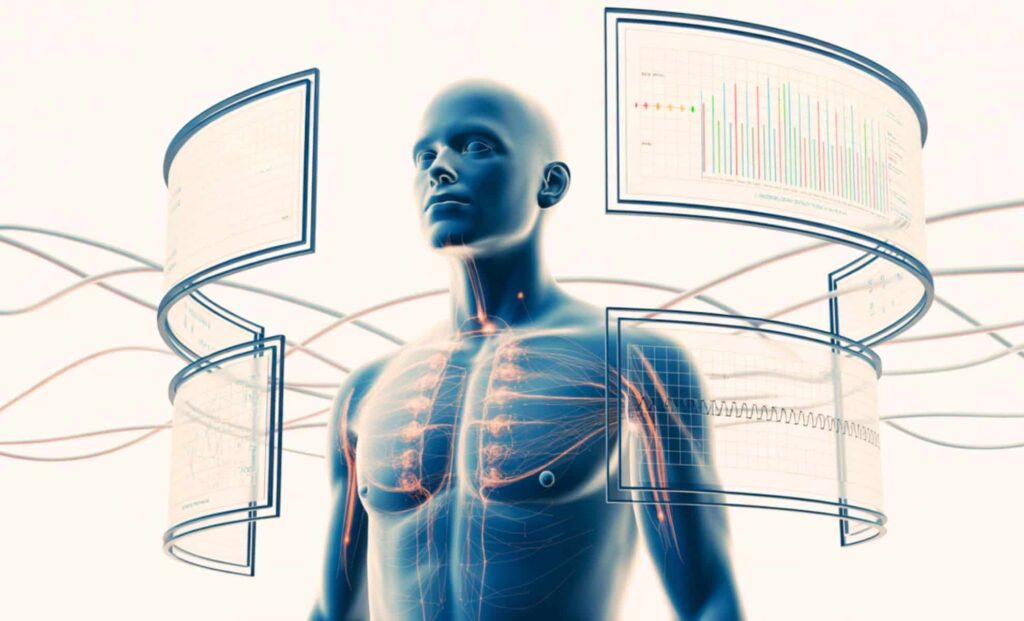A new artificial intelligence model developed in Europe can now forecast a person’s risk of developing more than 1,000 diseases—often decades before any symptoms appear. Trained on vast troves of medical data from the UK and Denmark, the system marks a major advance in the use of AI for long-term health prediction.
Called Delphi-2M, the model doesn’t offer diagnoses. Instead, it estimates the likelihood of future health events, using a person’s medical history, lifestyle factors, and demographic profile. Its predictions, much like a weather forecast, are based on probabilities rather than certainties—but researchers say the model’s accuracy already rivals or exceeds many tools used in clinical settings today.
Delphi’s ability to identify individual and population-level health risks has significant implications. As health systems strain under the pressures of aging populations and chronic disease, tools that can anticipate illness years in advance could help redirect care, allocate resources more efficiently, and even guide public health policy.
An AI Trained to Read Your Medical Past—And Anticipate Your Future
The architecture behind Delphi-2M is inspired by large language models—the same technology used to generate human-like text. But instead of words, Delphi processes ICD-10 disease codes, which track diagnoses in standardized form across most modern healthcare systems.
It learns from these codes the way a language model learns from sentences: by identifying what comes next. For instance, if a 55-year-old has a history of high blood pressure, obesity, and smoking, Delphi will compare that sequence against hundreds of thousands of similar histories to predict which condition might follow, and when.
The system was trained on anonymized records from over 400,000 participants in the UK Biobank, then tested on 1.9 million patients in the Danish National Patient Registry. The diversity of these datasets—spanning decades of longitudinal records—allowed the model to learn complex patterns of co-morbidity and adjust to different national healthcare systems.
Its results were striking. According to the DKFZ’s official announcement, Delphi-2M achieved an average predictive accuracy (AUC) of 0.76 across more than 1,000 diseases, and 0.97 for mortality—suggesting it can reliably forecast not just whether an illness will occur, but also when.
A Probabilistic Model of Long-Term Health
Delphi doesn’t make clinical judgments or offer diagnoses. Instead, it provides personalized risk estimates based on an individual’s unique health timeline. For instance, a man in his early 60s with few medical complications may have a 4-in-10,000 annual chance of a heart attack. But that risk could rise to 1-in-100 for someone with multiple past events, as the model dynamically updates risk profiles over time.
This time-aware prediction is a key innovation. While most risk models offer static snapshots, Delphi models disease as a process—one that unfolds across years and interacts with previous events. That allows it to simulate entire health trajectories, estimating not only which diseases might emerge but also their likely sequence and timing.
It can also model outcomes at the population level. In one experiment, researchers simulated future health outcomes for tens of thousands of people, then compared those synthetic results to real-world cases. The projected incidence curves for conditions like stroke, diabetes, and cancer closely matched actual observed data.
Perhaps most notably, the team demonstrated that Delphi-2M can generate fully synthetic patient data—entirely artificial health records that preserve the statistical patterns of real populations but contain no identifying information. These “digital twins” could be used to train other models without compromising privacy.
Limits, Biases, and Ethical Guardrails
Despite its promise, Delphi-2M has clear limitations. The UK Biobank, one of its primary data sources, primarily includes individuals aged 40–69, most of whom are white and relatively healthy. That means the model may underperform for younger people, marginalized communities, or those with rare conditions.
Its ability to predict infectious diseases, which often depend on unpredictable exposures, is also limited. And while Delphi can make long-term forecasts, its accuracy naturally declines over time—the further out the model looks, the wider the range of possible outcomes.
As detailed in the full Nature article, the team also evaluated potential demographic biases. Predictions were tested across age, sex, and socioeconomic groups. Some disparities were found—especially related to data gaps in underrepresented populations—but the researchers emphasized that no personal data were ever shared. All analysis took place within secure, government-regulated environments, and all data remained within their countries of origin.
forecasting medicine’s next frontier
Delphi-2M is not a medical product—at least not yet. But it could soon become a vital research tool, helping scientists explore the natural history of diseases, test the impact of interventions, or even run virtual clinical trials. In the future, similar models might support preventive care strategies, allowing doctors to identify high-risk individuals before illness takes root.
Dr. Moritz Gerstung, who co-led the project, believes this is just the beginning. “By modeling how illnesses develop over time,” he said, “we can start to explore when certain risks emerge and how best to plan early interventions.”
That kind of planning may be exactly what healthcare systems need as they brace for rising demand. With the right safeguards, AI tools like Delphi-2M could become less about predicting doom and more about empowering action—helping people live longer, healthier lives by making tomorrow’s medicine a little more informed today.

